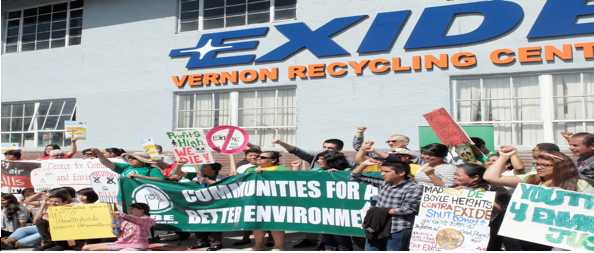GELFAND’S WORLD--UCLA's Institute of the Environment and Sustainability (the IOES) hosted a panel this week on GMOS: Global Solution or Global Risk? The GMO stands for Genetically Modified Organisms. You might have expected a resurfacing of the old, largely discredited fears about food safety, and that the audience would be full of folks talking about Frankenfoods, as some like to call them. This was largely not the case. Instead, the discussion focused mainly on long-term economic and ecological trends in world agriculture.
The panelists raised concerns about food security, which seems to refer to our ability to continue raising and distributing produce rather than anything about terrorism. There was one other topic that isn't discussed very much in the first world countries: the plight of the world's poor, including families barely surviving as subsistence farmers.
You can see the flier for the presentation, including the names and bio's of the panelists here.
One panelist was Peter Kareiva, who concentrates on risk analysis for this technology. Kareiva comes across as a down home guy, but he is privy to the upper levels of scientific thought. He is a member of the National Academy of Sciences. For those who aren't familiar with the title, it's a very high honor indeed, generally indicating a lifetime of upper level scientific achievement. Kareiva is on the NAS committee that considers GMO technologies and their potential risks.
Here is what he says, summarized as best I can: Decades of research and laboratory studies are convincing that genetically modified foods are safe for us, our pets, and farm animals to eat. He pointed out that we have been living a kind of large scale experiment in that Americans eat a lot of GMOs, whereas Europeans have avoided them. As he explained, if there were any effect of GMO ingestion, we should have seen differences between the two populations by now, and we haven't.
Timothy Wise, of Tufts University, seems to specialize more in broader scale policy studies in agricultural economics and sociology, rather than in biochemistry. He raised questions about long term safety, mentioning experiments involving the feeding of GMO food to lab animals which, he claimed, raised some concerns. Kareiva shot down this line of argument rather easily, explaining that the better designed experiments did not indicate any harmful effects. In particular, Kareiva pointed out that a study by Seralini -- which got worldwide press coverage a while back -- was badly designed and statistically inconclusive. Hold onto this thought because I will be coming back to it later.
Timothy Wise stuck to his guns, arguing that the only consensus among scientists about GMO use is that there is no consensus. Kareiva didn't take a large bite out of this rather vague assertion, but he did leave the impression that when knowledgeable scientists look at competent studies, then the consensus on the immediate safety of GMO foods emerges. He conceded that longer term studies could very well be done, and should be, even though we are a quarter of a century into the use of GMO crops.
Maywa Montenegro, a biologist who is completing her graduate studies in environmental policy at Berkeley, took the discussion in another direction. She pointed out that to focus on the safety of eating GMO food was to divert our attention from other important issues. These include the effects of herbicides such as glyphosate (Roundup) on farm workers, contamination of soil and water, the economic consolidation of the seed companies, and ecological simplification. If I understand correctly, the last term refers to the loss of wild species and the reduction in the number of strains of food crops that occurs as agriculture becomes monoculture.
Here is one interesting fact that this diverse group of panelists were able to agree on. The use of chemical insecticides goes way down when farmers use insect resistant plant strains. This is because plants with a particular inserted gene (known by the acronym BT) confers built-in resistance to being chewed up by insects. On the other hand, using herbicide resistant plants means that farmers can use more weed killer, and they do. Herbicide use up, insecticide use down.
By the way, BT is a long-time favorite among organic farmers, because it is the natural product of a bacterial strain. It's just that they spray it on the crop rather than use seeds that carry the BT gene internally. Customers who buy organic food don't always know that they can potentially get a dose of BT with their produce.
The last panelist was Pamela Ronald, who is a professor at UC Davis and an actual expert on plant genetics and genetic engineering. Ronald was a breath of fresh air, because she understands farming, organic farming, and the differences between agricultural genetics and agricultural economics.
For example, she pointed out that in the western world, almost all farmers use seeds that they have purchased from corporate sources. This is true whether the agricultural enterprise is an organic farm or non-organic, and whether the seeds have genetic modifications or not. Ronald pointed out (along with others) that farmers in poorer countries can't afford to pay for seed, and need to save seed from this year's crop in order to plant next year's.
One couldn't help but notice that a discussion that concentrates on the plight of third world farmers rapidly diverges from the discussion of western concerns about GMO food safety. The safety of eating GMO crops (in terms of fears about eating foreign gene products and recombinant DNA) is a small thing compared to the fear of crop failure and mass starvation. Ronald spoke of beneficial GMO crops, such as those designed to provide vitamin A to large numbers of people who grow up on a diet deficient in this nutrient.
The critique: apparently it's just as hard to debate science as it is to explain it
You may have noticed that I've presented a rather one-sided account here, in the sense that I took Peter Kareiva's comments as accurate, whereas I have discounted the remarks of Timothy Wise. You might say that I'm a bit biased in favor of those who understand the technology, and a bit biased against those who raise speculative concerns about unforeseen risks without laying out the rational, factual basis for these concerns. I think this is a fair point.
But my problem as an audience member and as someone trying to report the debate to the reader is that there was something that was largely missing from the discussion. The absent element was the factual basis of the arguments as might have been expected to be presented by either side.
For example, there has been a lot of public controversy and concern about the herbicide known as glyphosate, the compound that was originally introduced into the market as Roundup. One audience member asked an obvious question: what is glyphosate, and is it dangerous? I think that this is a reasonable request, but it's something that should have been presented at the outset.
Admittedly, this would have involved a three minute review of some high school chemistry and a slide or two. But at least then, we would have had something more concrete to wrap the discussion around. We were watching experienced teachers up on stage, but there was essentially no teaching. It would have been nice to get something, even at the level of a Wikipedia article, to introduce the topic.
Just for the sake of argument, here is a link [https://en.wikipedia.org/wiki/Glyphosate] to the Wikipedia explanation of what Roundup (chemically known as glyphosate) is, and what its advantages are compared to other herbicides. You have to read pretty far down to find that even the European Union does not consider glyphosate to be a risk to humans, although there are mentions of concerns about effects on farm workers subject to large doses.
Instead of the scientific specifics, we heard opinion after opinion after opinion in this discussion. I am fairly certain that most of the opinions were defensible, with the possible exception of a few remarks made by Timothy Wise. But how could anyone but an expert make a reasonable evaluation? Perhaps I'm wrong and Timothy Wise was speaking the truth, while the panelists who were favorable to GMO technology were wrong. But how could the audience know?
I don't mean to tear down the panelists. I think that they did what they were asked, and given the limits of time and the breadth of the subject matter, they presented their individual judgments as clearly as they could. But let's consider a disagreement on the science that came up during the discussion. If you feed GMO corn to lab animals, does it do anything bad? Wise suggested that the results of numerous studies did not lead to a clear conclusion that GMO food is safe. Kareiva pointed out that he had read most or all of the published studies, and that the ones suggesting harmful effects are badly designed or inadequately interpreted, or both.
This kind of argument is fairly common in public discussions of scientific studies. Unfortunately, it is no longer convincing to the public because blanket statements critical of experimental design are trotted out by villains and righteous scientists alike. I based my evaluation of the Kareiva vs Wise disagreement on my own preexisting knowledge of some of these studies.
The Seralini study which involved feeding GMO corn to rats was discredited, but unless you read the evaluations and know something about scientific methodology, you just have to decide whose word you are willing to accept. And the more scientific background you have, the better your judgment is likely to be. I was left with evaluating the arguments based on my personal judgment as to the credibility of the panelists.
As an aside, in the infamous study in question, Seralini and colleagues looked at a strain of rats that were originally inbred to be susceptible to cancer. They have been used in cancer studies ever since, because they provide a more sensitive test than other animals, or even other strains of rat. In fact, if you keep these rats alive, almost all of them will develop cancer spontaneously at some point of their lives. Seralini's group drew conclusions from using this highly inbred strain, conclusions which were rejected outright by careful scientists who looked at the published data.
I came away from the presentation accepting most of what I heard, including the fact that mass agriculture does damage to the natural environment, that the poorer third world suffers economic effects from corporate power, and that the long term ecological ramifications of farming is uncertain.
But what became clear is that there is a sharp demarcation between the popular complaints about GMOs and the reality. The existence of GMO technology by itself doesn't seem to be the issue. Rather, it is the impoverished state of much of the world's population, and what the rest of the world might be able to do about it. The argument seems to settle into concerns about private megacorporations controlling the development, production, and sale of next year's seeds.
But here is a topic that was not mentioned by any of the panelists, by the moderator, or by any of the audience questions: Aren't we really talking about the effects of the human population explosion? After all, if the population were half what it is today (and not expanding), then we would have some wiggle room to expand agricultural technology, preserve wild habitats, and potentially live free of starvation. As it is, we are using almost every available spot of open land to grow food to feed ourselves, without concern or respect for the other species we are destroying.
I suspect that the topic of GMOs could be useful in provoking the broader discussion, which was best touched on by Maywa Montenegro. Perhaps the topic would more correctly be described as the effects of the ways we reorganize the land into fields of crops. thereby destroying woodlands and pastures. And if so, shouldn't we be talking about a more serious approach to human population, just as we need to be talking about a more serious approach to global warming?
The panel was ably moderated by Edward Parson, who is that rare species, a physicist and mathematician who is a professor in the Law School, concentrating on climate change. We can expect to hear more from him on his chosen topic.
(Bob Gelfand writes on culture, science, and politics for City Watch. He can be reached at [email protected])
-cw







































